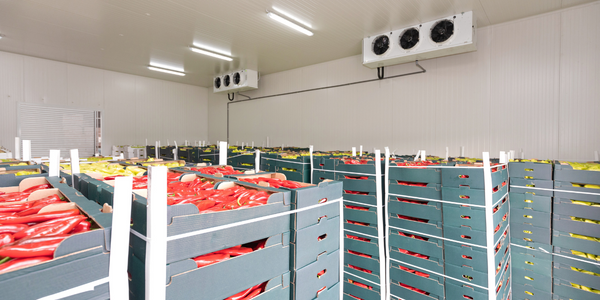下载PDF
Case Study Metro Transit System St. Louis, Missouri
技术
- 功能应用 - 企业资源规划系统 (ERP)
- 功能应用 - 车队管理系统 (FMS)
适用行业
- 运输
适用功能
- 物流运输
- 维护
用例
- 车队管理
- 预测性维护
服务
- 系统集成
挑战
The Metro Transit system of St. Louis City, St. Louis County and St. Clair County faced many maintenance and reliability challenges that affected service. In addition to too many breakdowns, Metro also faced severe reliability problems with its bus engines. This was the turning point when Metro decided to change the purchase of its bus engines. The most critical maintenance elements affected by this change were the efforts required to maintain fleet engines and transmission reliability. In 2003, Metro adopted AssetWorks FleetFocus to integrate all of the preventative maintenance scheduling, predictive maintenance forecasting, parts data, and other maintenance metrics that the property needed to measure.
关于客户
The Metro Transit system of St. Louis City, St. Louis County and St. Clair County owns and operates the St. Louis metropolitan region’s public transportation system including MetroLink (the area’s light rail system), MetroBus (bus fixed route), and Metro Call-ARide (paratransit vans). Metro also owns and operates the Gateway Arch Transportation System, Ticketing and Reservation Center, the Arch Parking Garage, the Gateway Arch Riverboats and St. Louis Downtown Airport in Cahokia, Illinois. Washington University students, Cardinal baseball fans, commuters, casual riders, special needs customers and tourists all use Metro’s system at an ever-increasing rate. Metro manages to serve these riders faster – and to more distant locations every year – while preserving historical routes within the core of its system.
解决方案
Metro adopted AssetWorks FleetFocus to integrate all of the preventative maintenance scheduling, predictive maintenance forecasting, parts data, and other maintenance metrics that the property needed to measure. The FleetFocus user interface is browser-based, providing a system that is easy-to-use, easy-to-deploy and as the most functional fleet application on the market, making it more consistent with Metro’s improved maintenance standards. The software enabled a major operational change to take place at Metro: A planned maintenance schedule for the bus and van fleet from acquisition to retirement, which hadn’t been in place before. This was designed to ensure that the highest level of maintenance dollars were spent at mid-life, which results in the greatest return on maintenance dollars invested. Metro also made another critical change at this time; to schedule parts replacement before a part failure actually occurred. This strict predictive maintenance program and the planned preventive maintenance program were both enabled by the new software.
运营影响
数量效益
相关案例.

Case Study
Airport SCADA Systems Improve Service Levels
Modern airports are one of the busiest environments on Earth and rely on process automation equipment to ensure service operators achieve their KPIs. Increasingly airport SCADA systems are being used to control all aspects of the operation and associated facilities. This is because unplanned system downtime can cost dearly, both in terms of reduced revenues and the associated loss of customer satisfaction due to inevitable travel inconvenience and disruption.

Case Study
IoT-based Fleet Intelligence Innovation
Speed to market is precious for DRVR, a rapidly growing start-up company. With a business model dependent on reliable mobile data, managers were spending their lives trying to negotiate data roaming deals with mobile network operators in different countries. And, even then, service quality was a constant concern.

Case Study
Digitize Railway with Deutsche Bahn
To reduce maintenance costs and delay-causing failures for Deutsche Bahn. They need manual measurements by a position measurement system based on custom-made MEMS sensor clusters, which allow autonomous and continuous monitoring with wireless data transmission and long battery. They were looking for data pre-processing solution in the sensor and machine learning algorithms in the cloud so as to detect critical wear.

Case Study
Cold Chain Transportation and Refrigerated Fleet Management System
1) Create a digital connected transportation solution to retrofit cold chain trailers with real-time tracking and controls. 2) Prevent multi-million dollar losses due to theft or spoilage. 3) Deliver a digital chain-of-custody solution for door to door load monitoring and security. 4) Provide a trusted multi-fleet solution in a single application with granular data and access controls.

Case Study
Vehicle Fleet Analytics
Organizations frequently implement a maintenance strategy for their fleets of vehicles using a combination of time and usage based maintenance schedules. While effective as a whole, time and usage based schedules do not take into account driving patterns, environmental factors, and sensors currently deployed within the vehicle measuring crank voltage, ignition voltage, and acceleration, all of which have a significant influence on the overall health of the vehicle.In a typical fleet, a large percentage of road calls are related to electrical failure, with battery failure being a common cause. Battery failures result in unmet service agreement levels and costly re-adjustment of scheduled to provide replacement vehicles. To reduce the impact of unplanned maintenance, the transportation logistics company was interested in a trial of C3 Vehicle Fleet Analytics.

Case Study
3M Gains Real-Time Insight with Cloud Solution
The company has a long track record of innovative technology solutions. For example, 3M helps its customers optimize parking operations by automating fee collection and other processes. To improve support for this rapidly expanding segment, 3M needed to automate its own data collection and reporting. The company had recently purchased the assets of parking, tolling, and automatic license plate reader businesses, and required better insight into these acquisitions. Chad Reed, Global Business Manager for 3M Parking Systems, says, “With thousands of installations across the world, we couldn’t keep track of our software and hardware deployments, which made it difficult to understand our market penetration.” 3M wanted a tracking application that sales staff could use to get real-time information about the type and location of 3M products in parking lots and garages. So that it could be used on-site with potential customers, the solution would have to provide access to data anytime, anywhere, and from an array of mobile devices. Jason Fox, Mobile Application Architect at 3M, upped the ante by volunteering to deliver the new app in one weekend. For Fox and his team, these requirements meant turning to the cloud instead of an on-premises datacenter. “My first thought was to go directly to the cloud because we needed to provide access not only to our salespeople, but to resellers who didn’t have access to our internal network,” says Fox. “The cloud just seemed like a logical choice.”





